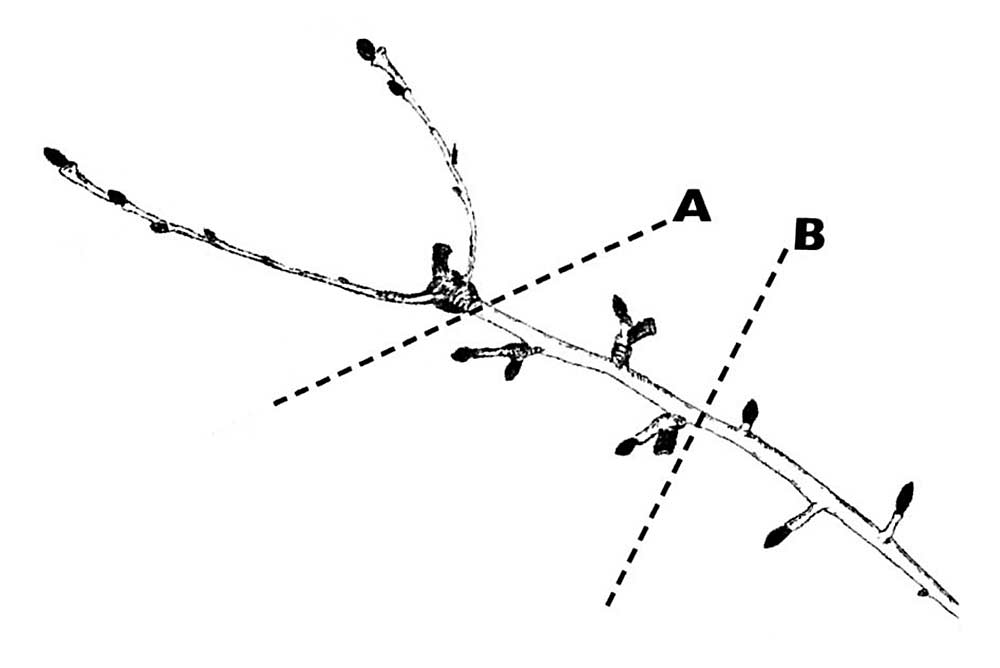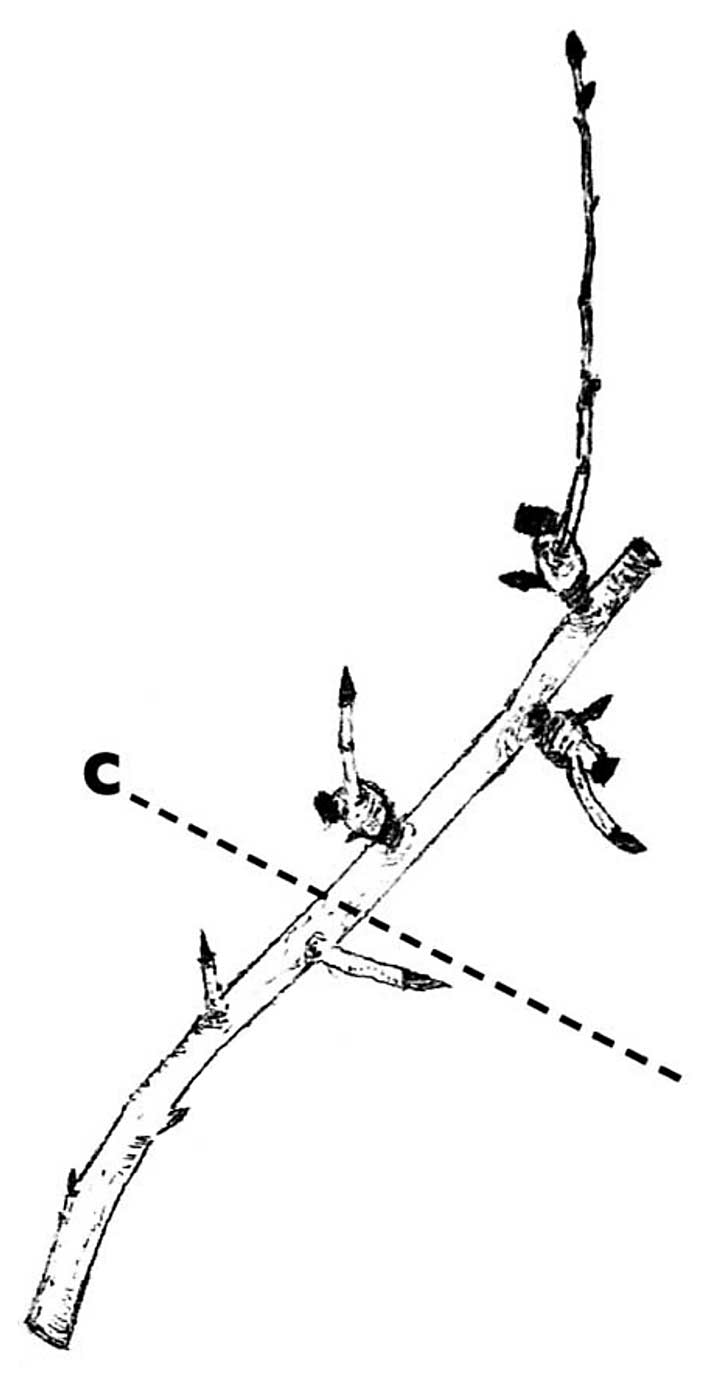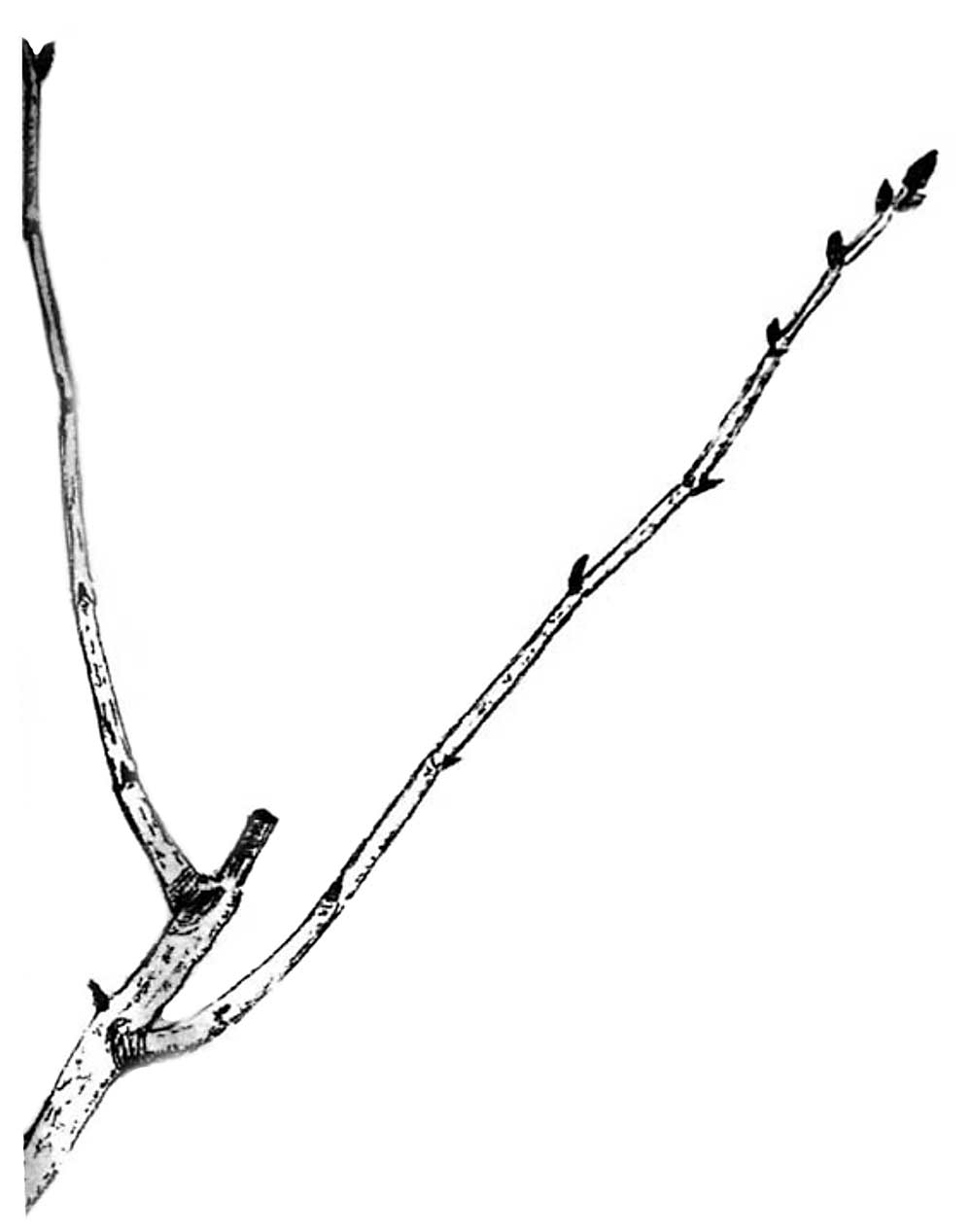Editor’s note: This column originally ran in 2010. Due to its continued popularity online, we decided to publish an updated version.
The largest and best quality apples and pears grow on 2-year-old wood and young spurs. To develop 2-year-old wood, prune trees according to the 1-2-3 rule of renewal pruning. This rule ensures that the fruiting wood remains young and productive. Your trees are as young as the fruiting wood.
The 1-2-3 rule of renewal pruning is simple and less expensive than spur pruning, and it ensures that your trees do not develop old, tired spurs that produce fruit of poor quality and size. This rule also avoids biennial bearing, provided there has been adequate cross-pollination.
The 1-2-3 rule is very effective if you keep your trees calm. Calm trees have dominant leaders that are not forked and have stubs and small secondary branches that carry the 1-, 2- and 3-year-old wood.
Using a pear tree as an example, here is how you use the 1-2-3 rule:

1) The 1 of the 1-2-3 rule refers to the 1-year-old laterals, also called pencils. These laterals are 300 to 400 millimeters (12 to 16 inches) long and a little thinner than a pencil. The buds at the tips are often fruit buds (Figure 1). Never shorten these laterals. If you have too many, space them out and keep the ones that are horizontal and almost as thick as a pencil.
Remove the strong upright shoots and long laterals without fruit buds at the tips. These are nonproductive growth shoots. However, some pear varieties, such as Forelle and Beurre Bosc, often do not produce 1-year-old laterals with fruit buds at the tips. If left untipped, these laterals will bud up in the second year.
Also remove the very thin laterals, because these will not produce the quality and sizes of fruit that the market wants.
About one-third of the renewal wood should be 1 year old.
If the laterals are much longer than 300 to 400 mm (12 to 16 inches), your trees are excessively vigorous, and you must address this problem first. Here are some suggestions:
—Do not apply — or cut back on — nitrogen fertilizer. Definitely no nitrogen fertilizer in spring.
—Prune more in summer, less in winter. Make thinning cuts instead of heading cuts. Let sunlight into your trees.
—Apply regulated deficit irrigation (RDI) if you can.
—Boost cross-pollination and fruit set by regrafting whole trees, branch-grafting or interplanting Chinese or Asian pear pollinizer trees, i.e., Ya Li for Forelle, Hosui and Nijisseiki for d’Anjou and Packham, and Nijisseiki for Bosc and Bartlett.
—Introduce five beehives per hectare (about 2.5 acres) at 5 percent full bloom. Hives must have young brood collecting mainly pollen. Place hives on fruit bins with hive openings facing southeast (northeast in the Southern Hemisphere).
—Mow weeds in the orchard to prevent them from flowering.
Note: On young, nonbearing Bartlett and Forelle trees on Open Tatura with 2,000 trees per hectare (800 trees per acre), we have used Ethrel (ethephon) sprays in mid- and late summer to terminate extension growth of laterals. This method of vigor control often resulted in laterals setting terminal fruit buds. Ethrel was sprayed, without a wetting agent, at the rate of 300 to 700 milliliters per hectare (4 to 10 ounces per acre) three to five times. The differences in rates depended on the temperature in the orchard after spraying. A low rate was used when it was hot and a high rate when it was cool. The active constituent of Ethrel was 480 grams per liter of ethephon.

2) The 2 in 1-2-3 refers to fruiting wood that is now 2 years old. This 2-year-old wood has had one or more pears at the tip last year and has now spurred up. The fruit bud at the tip has also grown one or two bourse shoots (Figure 2). About one-third of the renewal wood should be 2 years old.
How you prune this 2-year-old wood depends on the number of buds and the vigor of the trees. Here are two options:
—Cut back to the “ring.” This is the division between the 1- and 2-year-old wood. This cut is called the “ring” or “fertility” cut, because it improves fruit set (Figure 2A).
—Cut deeper than the ring to reduce the number of fruit buds. Often you find differences in the fruitfulness of this wood on the same tree. Cut deeper when the wood is weaker (Figure 2B).

3) The 3 in 1-2-3 refers to 3-year-old wood that was cropped when 2 years old and sometimes 1 year old. Renew the 3-year-old wood by cutting it back hard (Figure 3). This way you will generate new laterals, and the cycle starts again (Figure 4). You may leave some good young fruiting spurs on this 3-year-old wood, but you must cut back hard to get new laterals.
About one-third of the renewal wood should be 3 years old. •

—by Bas Van Den Ende






o liked Very much
That’s helpful!
Beneficial really
I assume all of this could change, depending on what area of the country you live in? I live in the Northeast mid Maine.